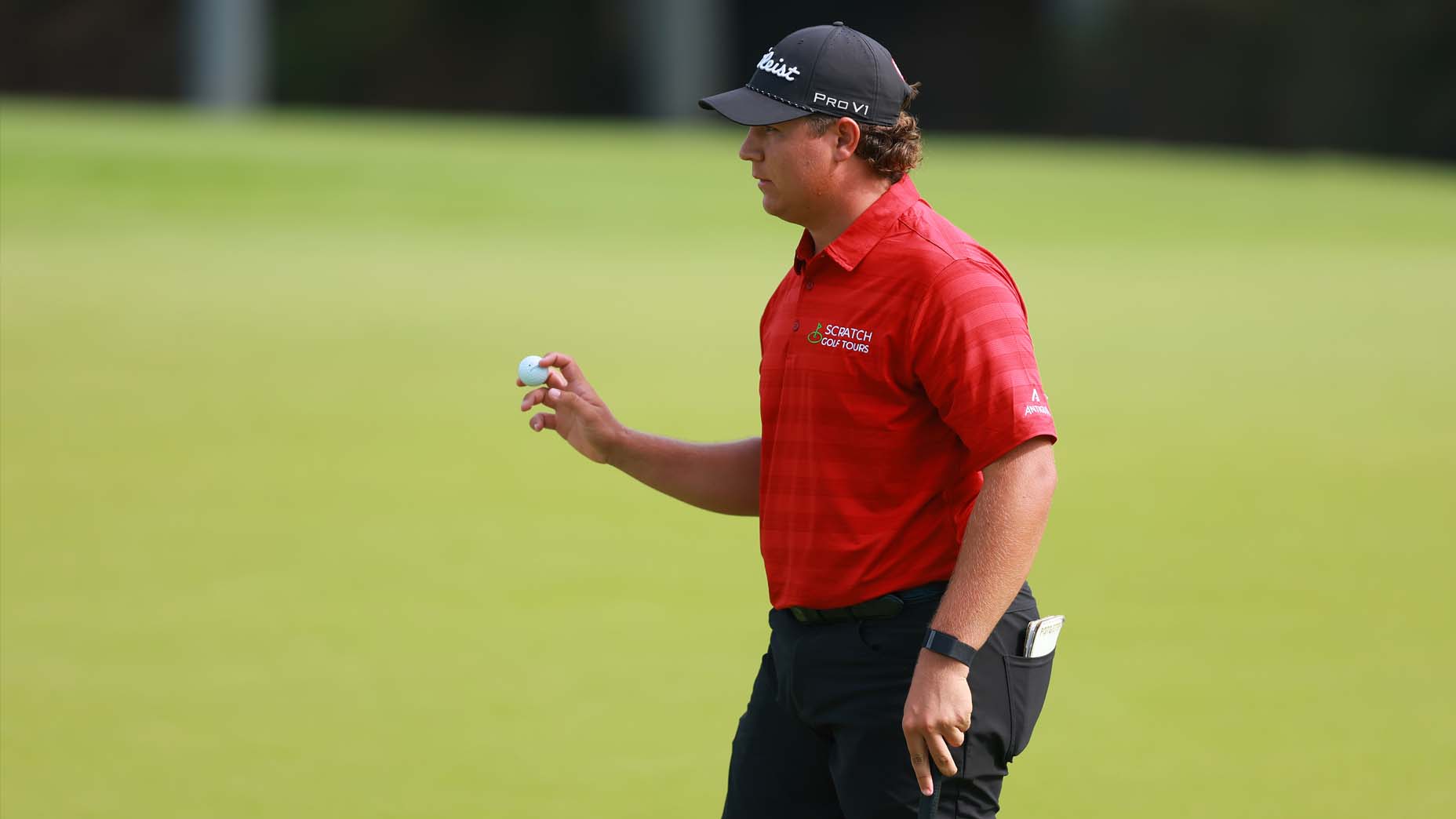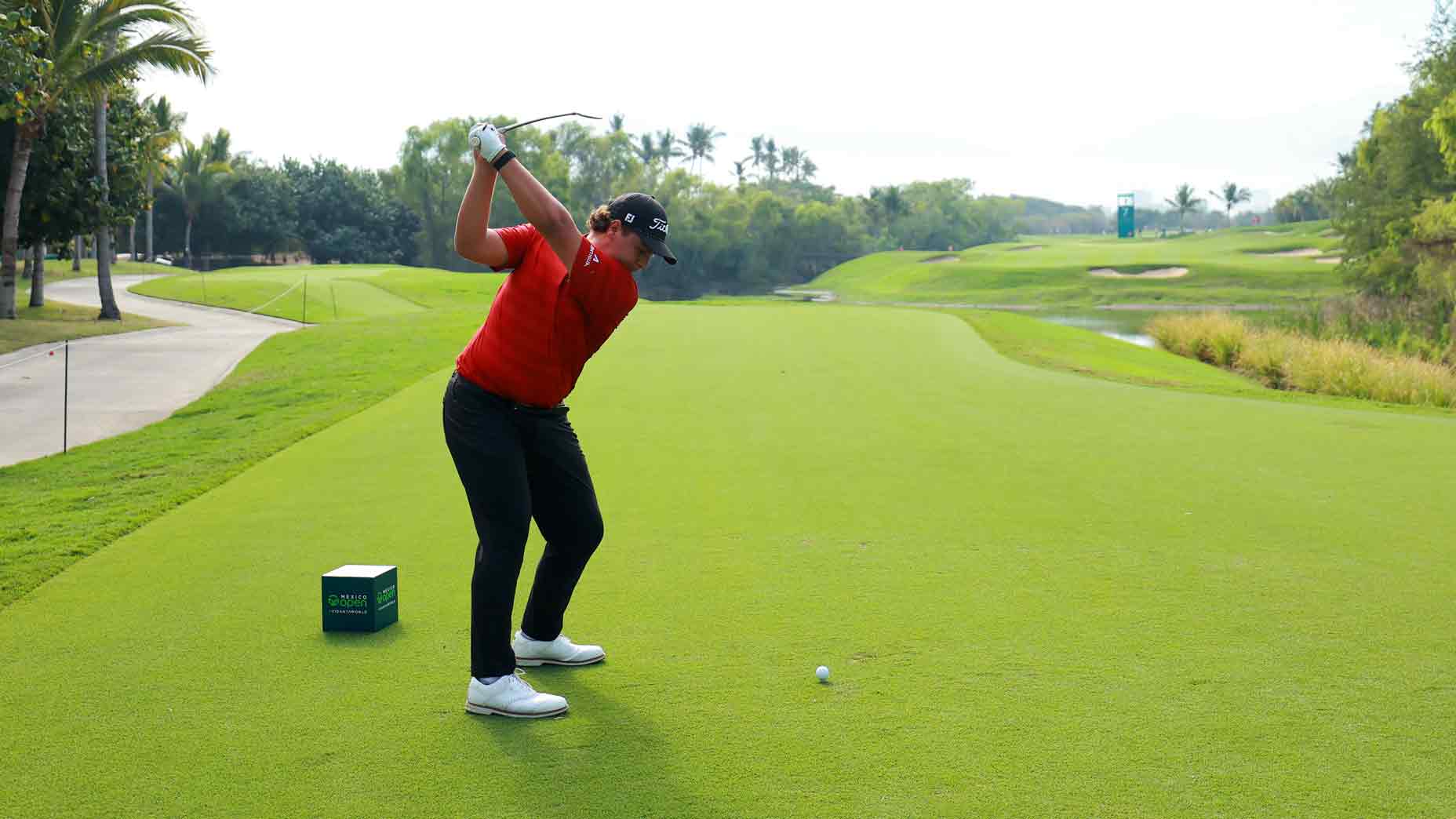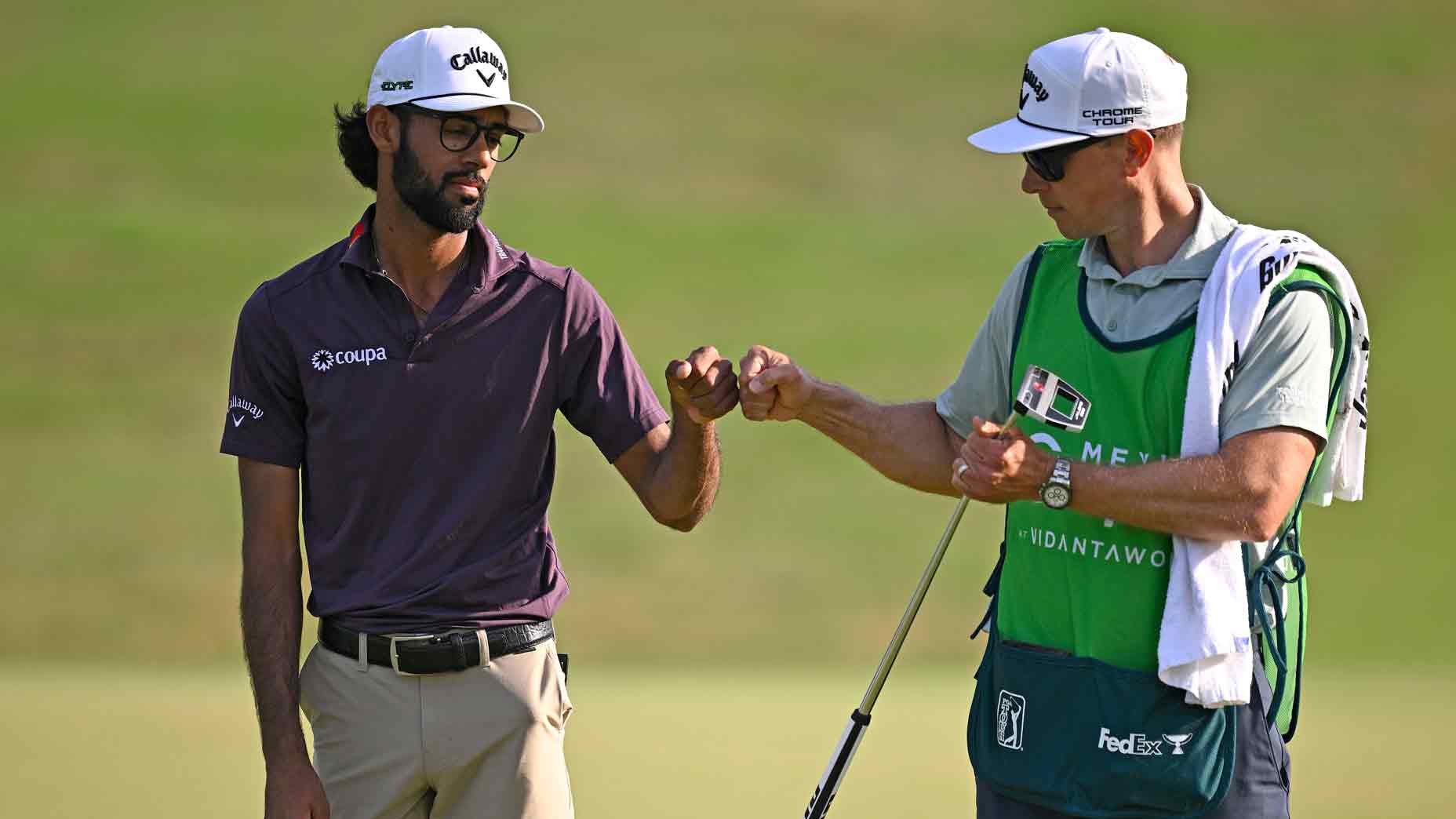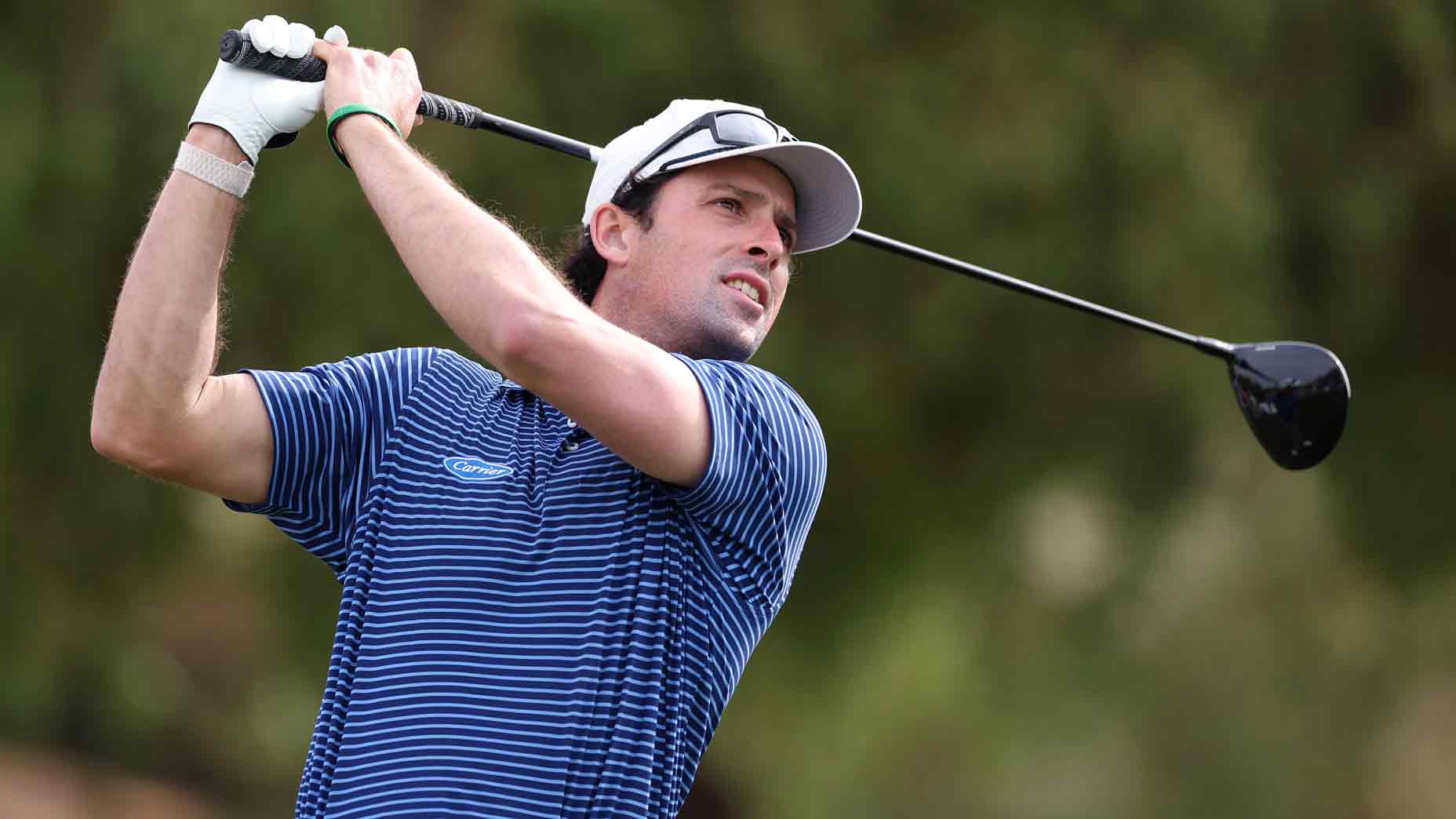 Will Chandler explains how he went from Monday-qualifier to PGA Tour cardholder
Will Chandler explains how he went from Monday-qualifier to PGA Tour cardholder
Sierra Brooks Q&A: How do you know when it’s time to turn pro?
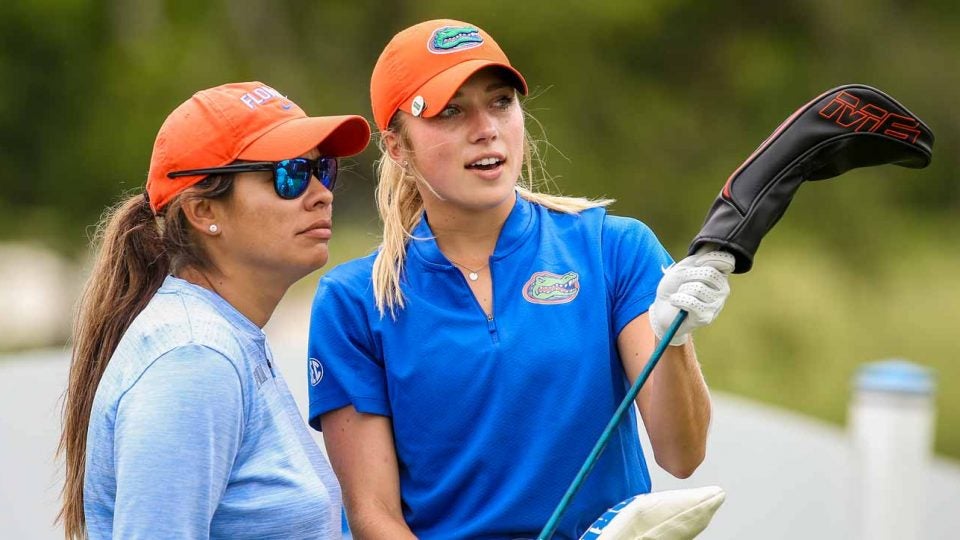
Last week Sierra Brooks, a senior at the University of Florida, announced that she was turning pro. Brooks, the No. 13-ranked amateur in the world, was in the midst of a stellar collegiate career at Florida that included a runner-up finish at last year’s NCAA Championships, a sparkling 70.33 scoring average this fall and a top-10 finish at the inaugural Augusta National Women’s Am. After finishing T62 at LPGA Q-Series (the top 45 earn their LPGA cards, while those beyond get status on the Symetra Tour) Brooks spoke to GOLF’s Dylan Dethier about the decision to leave Florida and turn pro — plus where she’s been and where she hopes to go.
Dylan Dethier: Obviously the big news today is that you’re turning pro, but to get some context on that decision, let’s go back to the beginning. You’ve been traveling and playing competitive golf for a long time. How did you first get your start in the game — and when did you know things were getting serious?
Sierra Brooks: Well, my dad played collegiate and a little bit of professional golf and got me into the game when I was six years old, got me into U.S. Kids Golf and then started traveling around, started competing at eight years old and honestly ever since I remember competing I had the goal of competing on the LPGA Tour. I was inspired by Paula Creamer and Natalie Gulbis and Annika Sorenstam. I would go and watch those girls play every year, and getting out there was just always something I was dreaming of while I was competing. It’s pretty much been there the whole way.
I thought about possibly turning pro after high school, there was a small chance, but instead I headed to school to get my degree and I ended up really happy that I’ve gone this route. I got these four years of experience and learned so much, too, and I’m really grateful. It’s been kind of a weird journey making my way to Florida [Brooks, a Florida native, transferred closer to home after a year at Wake Forest] but this place has been my home, I think it’s gotten my game ready and I wouldn’t trade it for anything.
How did the junior golf circuit compare to playing in college?
Honestly, the AJGA does an incredible job with their events, they’re first-class, up to the standard of what I’d consider some professional events. The courses that we’d get to play, the competition, the travel, all of that made it an easy transition into college. You’re also playing against the very best juniors, so when you’re in college you’re seeing those same faces plus some new ones.
There’s a transition there too, though, right? Playing high-level junior golf can be isolating, and pretty different from suddenly having a bunch of college teammates. Is it a big change, going from mostly competing as an individual to being on a team like that?
Completely. It’s tough, honestly, to figure out, because you know what works for you when you’re playing amateur and junior golf, you figure out how long you want to practice and work on something, what you want to do for workouts — you have your routine and your own people around you. But then you go to college golf with your team, which becomes your second family — but in addition, you’re competing against them, too! Plus you all have your own schedules with school. I was lucky that our coaches were flexible about letting us practice the way we thought we should. Still, you’re also on a schedule. It’s college sports, so everything’s a balance.
Life seems like it changed for you, at least your public-facing persona, with the Augusta National Women’s Am. You were on the Today Show, you were promoting this big event, you were on TV, how did that experience change things for you? Did it change things for you?
Oh, yeah. Getting in that spotlight was huge for me, and all the attention the event brought to women’s golf was incredible. It was everything the game needs and I feel like we were put on a stage that honestly hadn’t existed before. Not only that — we were promoting the game and getting to be a part of history. It was incredible. Everything about that event and what they’re doing is exactly what we need for women’s golf.
https://www.instagram.com/p/Bv9zEOBpU_s/
In stark contrast, tell me about Q-Series. Because the Augusta event, you’re in the spotlight, it’s just three rounds, you’re on TV, everybody’s paying attention. Q-Series is mostly anonymous and it’s eight rounds. Eight! That seems like a grind. What’s that tournament like?
It’s a whole ‘nother animal. I’ve never experienced anything like it, to be honest, and also I went from second stage straight to third so it almost felt like three tournaments all in one. It was really good experience for me — competing on that stage with some of the pros was great — but I also learned a lot about taking the time to make sure you’re physically and mentally charged up to go for those eight rounds. I’d played three college events right before second stage, so I never quite got time off to sharpen up and found myself trying to do that at third stage. But you’ve gotta focus on saving energy, too, because it’s a grind, mentally, physically, emotionally. Overall a great experience, but I don’t want to go back! I’m going to give Symetra a go and hopefully won’t have to be back at Q-School.
I know Q-Series didn’t go 100 percent according to plan [Brooks finished T62, missing her LPGA card by seven shots], but you obviously played well to make it to that final stage, setting you up for the possibility of the Symetra Tour and this decision. Did you have a plan going in, or do you wait until afterwards to have those big conversations with people around you?
I had no plan. But I was leaning on the side of waiting to declare pro until after my senior season. I liked the route that [Maria] Fassi and [Jennifer] Kupcho went. But then I saw as their seasons progressed that if you wait until the end of the college season, it can be really tough to keep your card with the limited number of events.
While I was in it, I was just trying to take it step by step, stage by stage. But ultimately the deciding factor for me was that the Symetra starts in March and if I played the rest of the college season I would miss 11 or so out of 23 events. My goal being to get my LPGA Tour card as soon as possible, missing half the season didn’t make sense. It just seemed like the better call to put my best foot forward and get after it as soon as I could.
That makes sense. Are you making these decisions yourself or are there friends, family, other advisors you lean on for those big questions?
I lean a lot on my family — it’s really just been my family, my parents and I going through everything, weighing the pros and cons of both sides and trying to figure out what’s best for me and how I can achieve my goals. We’re pretty tight, so it’s been pretty much just within my family.
Have you been talking to other players in similar positions who are thinking about turning pro? Or does this just feel like a personal decision?
Not really. I’ve talked to [LPGA rookies] Kristin Gillman and Lauren Stephenson and Maria Fassi and those girls, but I didn’t really go to them for advice because everybody’s college experience is different, everybody’s coming from their own spot. But more so for me it was just that I would have stayed if I would have missed fewer events. Because I want to give nationals a second go-round, and I wouldn’t mind playing Augusta again, either…
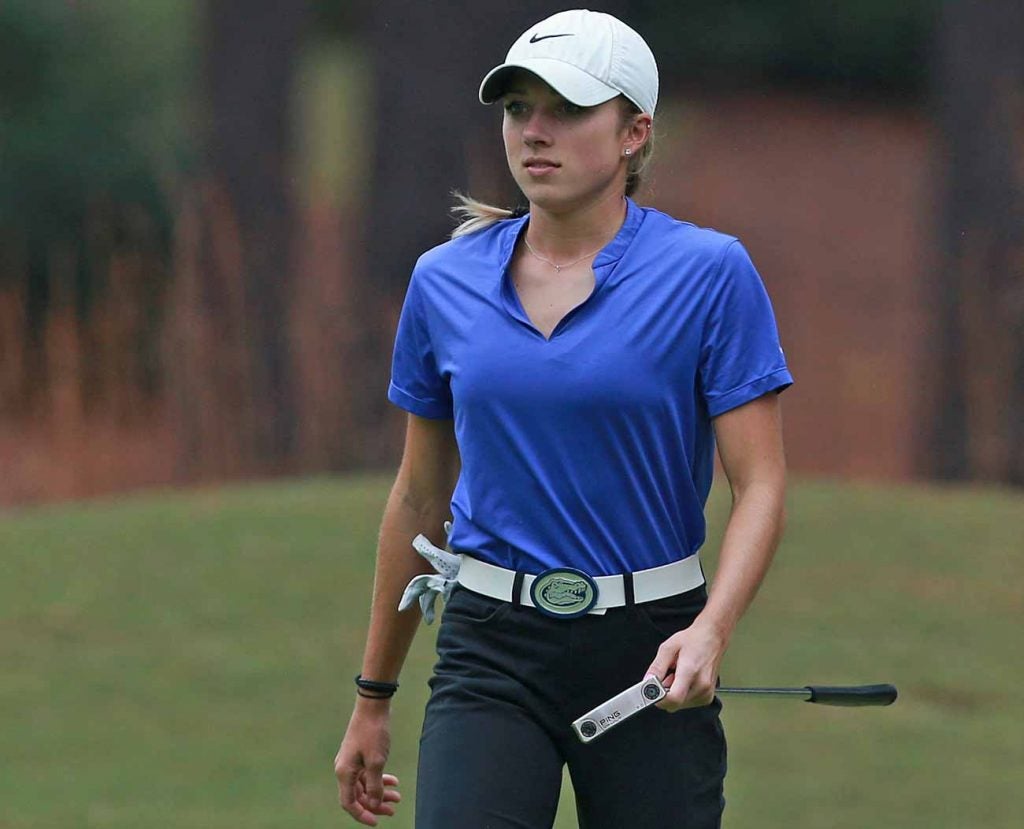
ADVERTISEMENT
I was just reading the letter that Jack Nicklaus wrote 58 years ago today telling the USGA that he was going to turn pro. First of all, maybe a good omen that you’re turning pro on the very same day as Jack. But I also thought it was interesting that he described it as a decision he made with “mixed emotions” and “many regrets.” For you, what’s bittersweet about the decision to turn pro?
Wow, that’s really cool! The whole thing has been bittersweet, really. The main thing is just with my team and coaches. I’m really close with them, and it’s tough to leave when you’ve all been working with the same goals in mind going after a national championship. Knowing that I’m not going to be a part of that is tough, having to say goodbye. My goals in life have always been to play and compete out there on the LPGA Tour, so I have to give myself the best chance at doing that. But it’s hard.
Have you gotten a chance to talk to your coach and to your teammates? What were their reactions?
Yeah, that was the first thing I did after Q-School. I made my decision and then I came up here to tell them. I’m really thankful to have their support. That was bittersweet, but they’re all supportive of my decision and made it clear they want what’s best for me.
https://www.instagram.com/p/B4kn6rOJyak/
What’s your first professional tournament going to be? Where will you be making your debut? At the start of the Symetra season?
So far, that’s the plan! But my dad and I have been talking and we might see if there are some little professional events around the Florida area just so that I can keep the competitive juices flowing. I have a decent amount of time between now and the beginning of the Symetra season, so I’m going to see. But as of now, that’s the first thing.
Will you apply for sponsor’s exemptions on the LPGA Tour? Do you know how that process works?
Yeah, I will, but I actually don’t know much about how any of that works, I’ve never done it before so I’m not exactly sure. I know it will be tricky trying to figure out which events are the right ones to do that in conjunction with the Symetra schedule, so figuring out where LPGA events make sense will be something I’ll have to figure out.
What are you most excited about? You said getting to the LPGA has been a lifelong dream — now that you’re this much closer, what about the reality of that idea sounds most appealing?
I just think competing at the highest level of golf and against the best women’s golfers in the world and getting to do that as a profession is just so exciting because that’s what I love and golf is just what I love. That’s pretty simple, but to be able to call that my job, I’m pretty lucky to say that. To be able to have a chance to put my name in record books, I always have dreamed about being in the LPGA Hall of Fame one day and things like that, those big goals that I’m trying to reach — it’s exciting because as a little girl those are things that I dreamed of and have always envisioned while I’m practicing, so it’s really cool to be getting closer and closer to that.
What makes you the most nervous?
I think just the whole newness of the life out there. I’ll have to find my rhythm and I just want to make sure I get the right group of people around me. I already have great people around me, so I actually shouldn’t be too worried about that. But I guess just the unknown just means that I know what college golf was like and I know what amateur golf was like. But I don’t know what pro golf is like. So I’m ready to get my feet under me out there.
For those who don’t know your game very well yet, give me your scouting report. What are already your biggest strengths, and then what parts of your game are you looking to dial in while you’re practicing the next few months?
I am definitely a scrambler, you can ask my teammates about that. They’ll see me anywhere and everywhere on the course, but I really do tend to get the most I can out of my rounds. Overall my game is pretty well-rounded, but putting is my strong suit; in my short game and putting I find a way when sometimes it looks like there’s no way.
In the offseason I’m also hoping to sort out some of my equipment and get that dialed in. Also, you can just never do enough wedge work and putting, so the more I focus on that the more it relieves pressure on the rest of my game.
What’s it been like being in the spotlight a little more? You’ve been on the Today Show, you’ve played golf on NBC, you’ve picked up tens of thousands of followers on Instagram. People are invested in your decisions! What’s that like?
It’s been really cool. I’ve loved seeing people reach out and offering support on social media and I’m thankful for that. It’s a little bit overwhelming too — it’s definitely overwhelming — but it’s also really neat to just see all the people that are engaged there and it makes me excited for what’s to come for the future.
With golfers, we’ve seen the full range: On the one hand, Bryson DeChambeau will be in our Instagram comments, replying dozens of times to people. Then there are plenty of other golfers who say they literally never check their mentions. Where do you fall on that scale?
Well, I used to fall on the scale of never checking, ever. But now I’ve been trying to be a lot more engaged with that and the audience and all that goes into it. I’m learning the ways of Instagram, I guess, but you’ll definitely see more from me there. I’m not going to hide!
Do you have any advice for somebody who would be a few years younger than you, somebody who is getting serious about the game and might have professional aspirations?
I would say the best advice I’ve gotten is to trust yourself. Figure out the things that work best for you, things that allow you to do your own best work. Don’t ever listen to the noise, don’t stray from that plan, stick to your guns. I’m a big believer in the idea that you get what you work for, so if you know you and you stay true to yourself, just never doubt it.
What else should golf fans know about you as you enter the pro ranks?
Well, I’m a fighter and I’m going to give everything to make sure I’m ready for this next step in my journey. I’m excited for all the opportunities ahead, and especially the stuff in golf that’s bigger than myself, like using my own career to grow the game. It doesn’t seem all the way real yet, but I’m excited for what’s next.
ADVERTISEMENT





